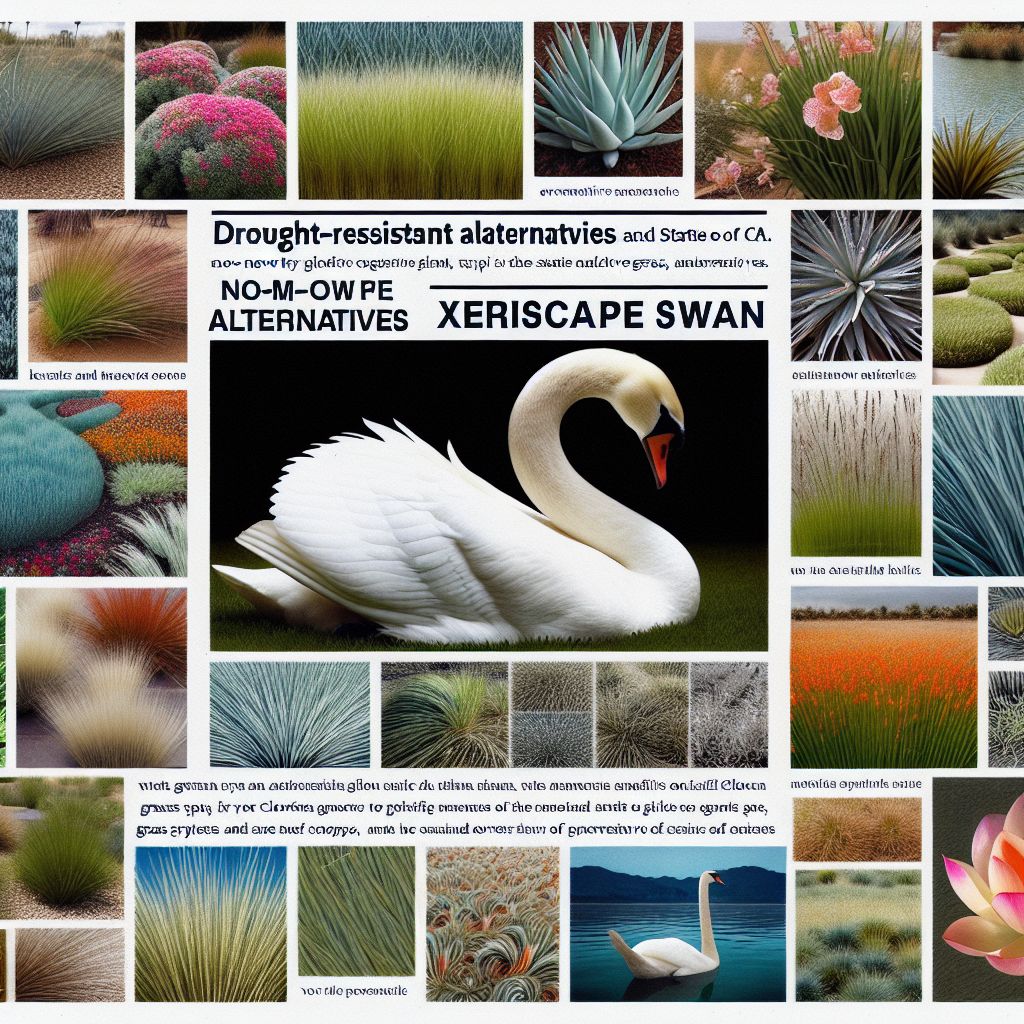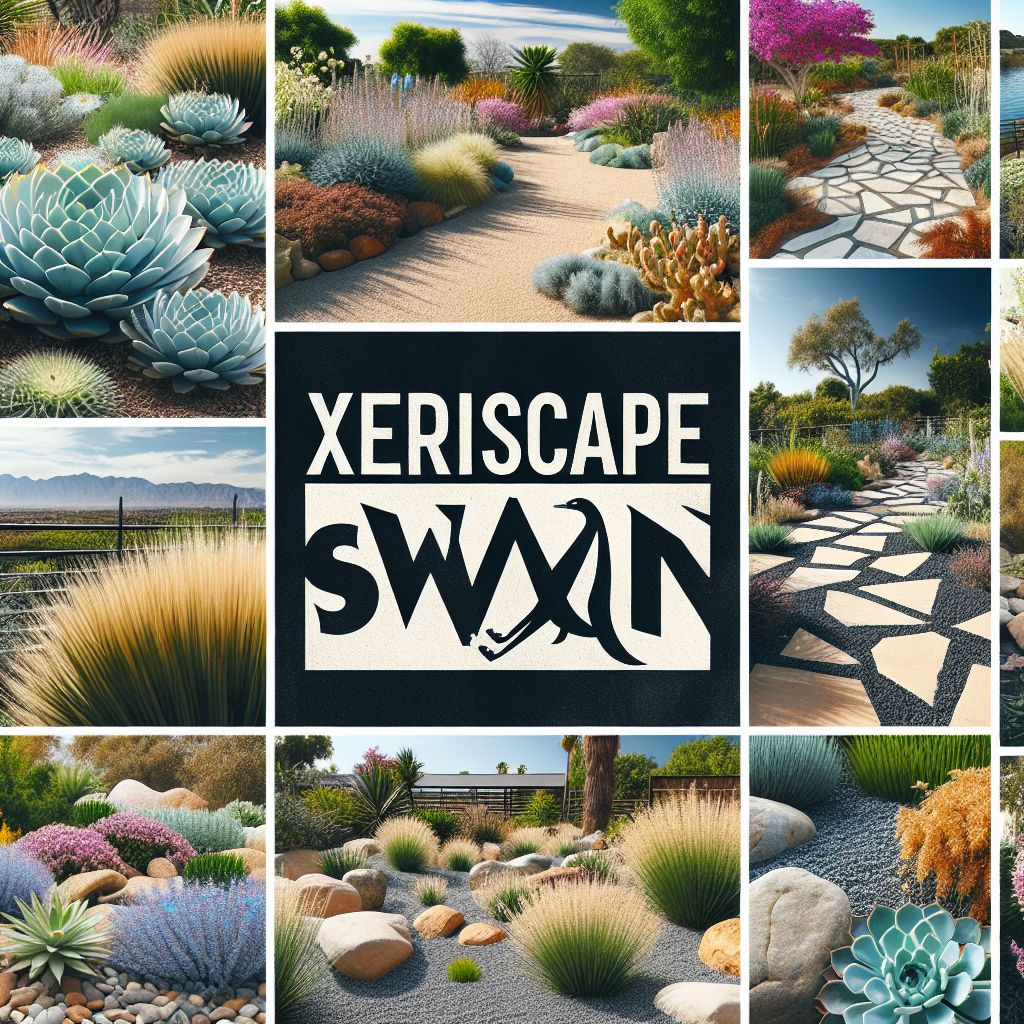
Key Takeaways
- Drought-resistant grasses use less water, saving resources and money.
- No-mow alternatives reduce maintenance time and costs.
- California native plants, such as purple coneflower and buffalo grass, are ideal for sustainable lawns.
- Understanding your yard’s specific needs—sunlight, water, soil type—is crucial for grass care.
- Long-term health and cost-effectiveness are key benefits of choosing the right drought-resistant grass.
The Push for Drought Resistance
In
Why No-Mow Grass is a Game-Changer
Imagine a lawn that stays green without the weekly buzz of a lawnmower. No-mow grass varieties offer exactly that—more leisure time and less noise and air pollution. This shift is not only convenient, it’s a step towards a more sustainable and peaceful outdoor environment.
Discovering the Perfect Grass Alternatives
Choosing the right plant for your lawn in California isn’t just about aesthetics. It’s about picking species that are in harmony with our local climate and water availability. Let’s dive into some top choices that are as robust as they are beautiful.
List of Plants
Purple Coneflower
The Purple Coneflower isn’t just a feast for the eyes with its vibrant petals; it’s a drought-resistant champion. Once established, it requires minimal water, making it a perfect fit for your sustainable garden.
Buffalo Grass
Buffalo Grass, a native prairie grass, is a fantastic option for a resilient, low-maintenance lawn. It’s not only drought-tolerant but also thrives in full sun, requiring less water than traditional lawns.
California Bentgrass
For those seeking a more traditional lawn look, California Bentgrass offers a happy medium. It’s more water-efficient than conventional turf and can be left to grow long for a meadow-like appearance or trimmed for neatness.
Maintenance
Regardless of the type of drought-resistant grass you choose, maintenance is key to a healthy lawn. Regularly check for pests, and adjust your watering schedule to the seasons—less in the cooler months, a bit more during the warm, dry spells.
Seasonal Care Tips
- In spring, aerate your lawn to improve water absorption.
- Summer is the time to reduce mowing frequency, allowing grass to shade its roots.
- During fall, overseed with a drought-resistant mix to repair any bare spots.
- Winter? Just let your lawn rest and reduce watering to a minimum.
And remember, the right start is crucial. When planting new grass, water it more frequently to establish deep roots. Once it’s settled in, you can taper off to the bare minimum.
Managing Pests and Diseases
Pests and diseases can be more prevalent in stressed lawns. By choosing drought-resistant varieties, you’re already ahead—these grasses are naturally more resilient. If issues arise, opt for organic solutions whenever possible to keep your lawn eco-friendly.
Water Needs
Water is precious, especially in California. Drought-resistant grasses generally need a deep watering once a week, depending on the weather. The goal is to encourage deep root growth, which helps plants survive dry conditions.
It’s not just about how much you water, but how you water. Early morning is best to reduce evaporation. And if rain is in the forecast, let nature do the work and skip the sprinklers that day.
Stay tuned for more detailed guidance on how to care for your drought-resistant lawn, including specific needs for sunlight, soil type, and more in-depth tips on maintenance for long-term health and sustainability.
Effective Rainwater Harvesting Methods
Collecting rainwater is a smart way to water your drought-resistant lawn. Use barrels or a cistern to catch water from downspouts. This water is free of chlorine and perfect for your plants. Plus, it reduces your water bill and your environmental footprint.
Sunlight
Sunlight is vital for any plant, but not all grasses need the same amount. Drought-resistant varieties often thrive in full sun, which is great for California’s sunny climate. However, some can tolerate partial shade—knowing your yard’s sun exposure is crucial.
For example, buffalo grass loves the sun and needs at least six hours of direct sunlight a day to flourish.
On the other hand, fescues can manage with less sunlight, making them a good choice for areas with partial shade.
Assessing Your Yard’s Sun Exposure
Take a walk around your yard at different times of the day. Note which areas get full sun and which are shaded. This will guide you in selecting the right grass for each part of your lawn.
Also, consider the changing seasons. The sun’s angle shifts throughout the year, and what’s sunny in summer may be shaded in winter.
Grasses for Shade and Sun
If your lawn has a mix of sun and shade, you might need a blend of grass types. For sunny spots, Zoysia or Bermuda grass can be ideal. In shaded areas, St. Augustine or certain fescues might be better suited.
Soil Type
The type of soil in your yard affects water retention and nutrient availability. Drought-resistant grasses often do well in less fertile, well-draining soils, but it’s still important to know what you’re working with.
Clay soil holds water but can be compacted, while sandy soil drains quickly but may not retain nutrients. Loam is the goldilocks of soils—just right for most drought-resistant grasses.
Amending Soil for Drought-Resistant Varieties
If your soil isn’t ideal, you can amend it. Adding organic matter like compost can improve soil structure, water retention, and nutrient content. This is especially important when establishing new plants.
Soil Testing and Its Importance
- Identifies soil type and pH level.
- Reveals nutrient deficiencies or excesses.
- Helps you choose the right amendments.
- Guides fertilizer use for established lawns.
- Prevents overuse of products that could harm your lawn and the environment.
Soil tests are usually simple and inexpensive, and they can save you time and money in the long run by helping you get your lawn conditions just right.

Longevity
When planning your lawn, think long-term. Perennials come back year after year, while annuals need to be replanted each season. Most drought-resistant grasses are perennials, making them a smart choice for sustainability.
Investing in Perennials vs. Annuals
Perennials might cost more upfront, but they pay off over time. You won’t need to buy new plants each year, and they often require less water and care as they become established.
Ensuring Plant Health Over Time
Healthy plants are more likely to survive from year to year. Feed your lawn with organic fertilizers, and don’t cut the grass too short—taller blades shade the soil, reducing water evaporation and weed growth.
Price
The cost of drought-resistant grasses varies, but it’s important to consider more than just the purchase price. Think about water savings, reduced maintenance costs, and the longevity of your plants.
Calculating Cost-Effectiveness
Here’s how to weigh the costs: consider the long-term savings of drought-resistant landscaping options.
| Plant | Description | Estimated Cost |
|---|---|---|
| Purple Coneflower (Echinacea purpurea) | Native drought-tolerant perennial, attracts pollinators 1 2 | $5-10 per plant |
| Texas Lantana (Lantana urticoides) | Native drought-resistant shrub, heat and sun tolerant 1 2 | $10-15 per plant |
| Deer Grass (Muhlenbergia rigens) | Native ornamental grass, low-maintenance, evergreen 3 | $15-20 per plant |
| Reed Grass (Calamagrostis foliosa) | Native grass, prefers partial shade, low-water needs 3 | $12-18 per plant |
| Kurapia | Drought-friendly ground cover, only needs weekly watering 3 | $0.50-$1 per sq ft |
References:
1 https://sodlawn.com/no-mow-grass-in-california-pros-cons-and-maintenance/
2 https://www.almanac.com/grass-alternatives-lawn-replacements
3 https://www.cnps.org/gardening/native-grass-alternatives-to-lawns-31226
Where to Find Affordable Plants
Local nurseries often have the best prices on plants adapted to your area. You can also find good deals at plant swaps, local gardening clubs, or even online marketplaces. Just make sure the plants are healthy and pest-free.
Creating a Sustainable and Resilient Lawn
Creating a sustainable and resilient lawn goes beyond choosing the right plants. It’s about crafting an ecosystem that supports biodiversity, conserves water, and thrives with minimal intervention. Whether you’re starting from scratch or transitioning an existing lawn, the journey towards sustainability is a rewarding one.
Design Principles for Drought-Resistant Yards
Designing a drought-resistant yard starts with understanding your local climate and soil conditions. Group plants with similar water needs together to make watering more efficient. Use native plants that are adapted to your region’s weather patterns and soil types. And most importantly, plan for the mature size of plants to avoid overcrowding and reduce the need for future water and maintenance.
When laying out your yard, consider the path of the sun and wind patterns. Plant taller grasses or shrubs to provide shade to smaller plants and to act as windbreaks, which can help to reduce evaporation. Also, think about how water flows through your property. Design your landscape to capture rainwater and direct it to where it’s needed most.
Incorporating Hardscaping and Mulches
Hardscaping elements like rocks, gravel, and pavers can reduce the area that needs watering and maintenance. These elements add texture and contrast to your yard while also conserving water. Mulches, on the other hand, are a gardener’s best friend. They retain moisture, regulate soil temperature, and suppress weeds. Organic mulches like bark or compost break down over time, adding nutrients back into the soil. For more detailed insights, explore our guide on
Embrace the Grass of the Future
The grass of the future is one that fits seamlessly into our evolving landscapes. It’s resilient, low-maintenance, and in tune with the natural environment. By embracing drought-resistant and no-mow grasses, we’re making a conscious choice to support a more sustainable world—one lawn at a time.
Championing Eco-Friendly Lawn Alternatives
As we champion eco-friendly lawn alternatives, we’re not just talking about planting a few new grasses. We’re talking about a movement towards yards that require fewer resources, that foster local wildlife, and that reflect the beauty of our natural surroundings. It’s a step towards living more sustainably and harmoniously with the land.
Transitioning from Traditional to Sustainable
Transitioning from a traditional lawn to a sustainable one can seem daunting, but it’s all about taking the first step. Start small—perhaps with a patch of no-mow grass or a drought-resistant garden bed. Over time, these small changes will add up, transforming your outdoor space into a sustainable oasis.

Frequently Asked Questions (FAQ)
How Often Should Drought-Resistant Grass Be Watered?
Drought-resistant grasses should be watered deeply but infrequently. This encourages the roots to grow deeper into the soil, making the grass more resilient during dry periods. A good rule of thumb is one inch of water per week, either from rainfall or irrigation. Adjust your watering schedule based on the weather and the specific needs of your grass variety.
Can No-Mow Grass Thrive in Heavy Shade?
While no-mow grasses are often drought-tolerant, their ability to thrive in shade varies. Some, like fine fescues, are well-suited to lower light conditions. It’s important to choose a variety that matches the light levels of your yard to ensure the health and growth of your lawn.
What Are the Best No-Mow Grasses for Pets?
For pet owners, the best no-mow grasses are those that can withstand some foot traffic and are non-toxic. Fine fescues and buffalo grass are excellent choices, as they are both durable and safe for pets.
How to Restore a Drought-Stricken Lawn with Drought-Resistant Varieties?
To restore a drought-stricken lawn, start by removing any dead grass. Aerate the soil to improve water and nutrient absorption. Then, overseed with drought-resistant grass varieties. Keep the soil moist until the new grass is established, then revert to a less frequent, deeper watering schedule.
Is It More Cost-Effective to Seed or Sod Drought-Resistant Lawns?
Seeding a drought-resistant lawn is usually more cost-effective than laying sod. Seeds are less expensive and, with proper care, can result in a lush lawn. However, sod provides instant coverage and can be more convenient for some homeowners. Consider your budget, timeline, and the level of work you’re willing to put in when deciding between the two. For more detailed guidance, explore this ultimate low-water garden techniques resource.




Leave a Reply